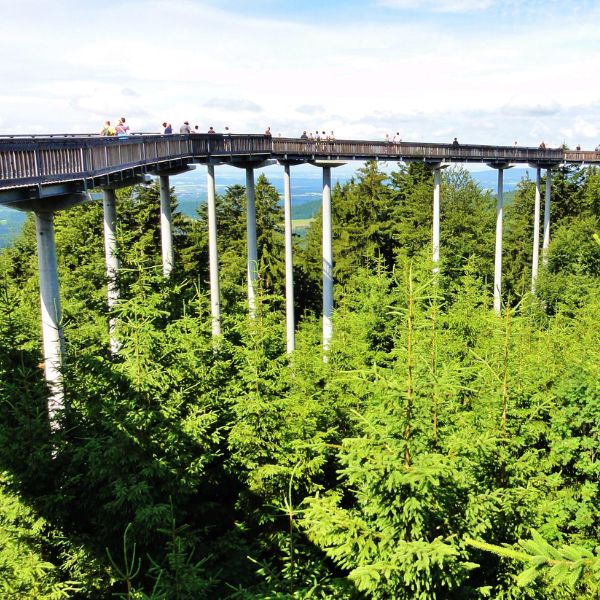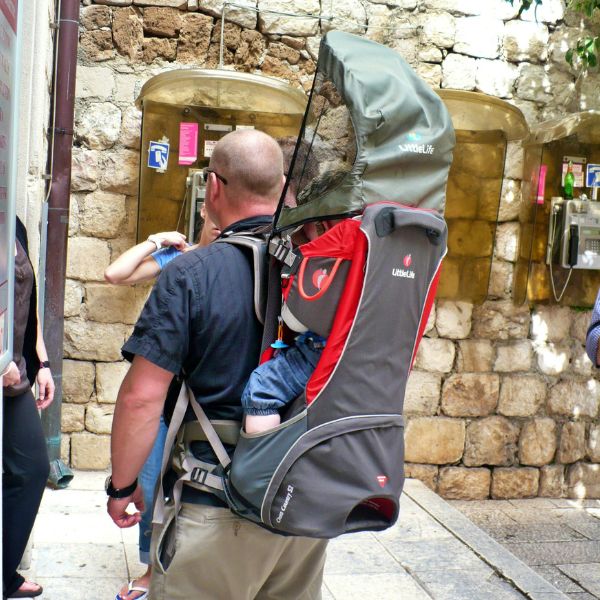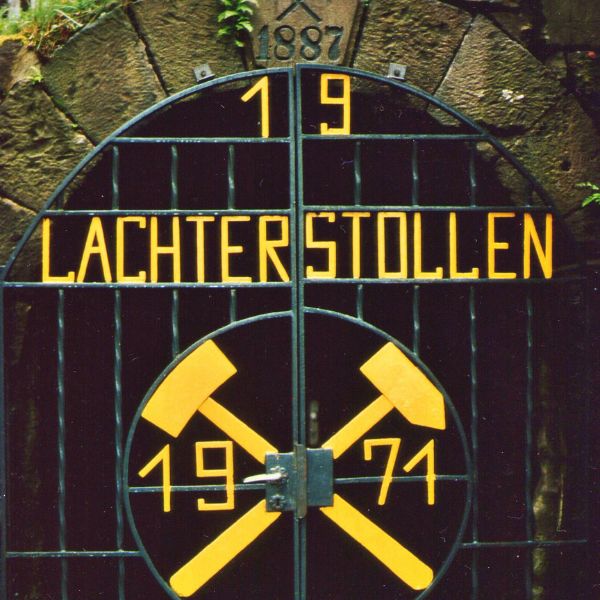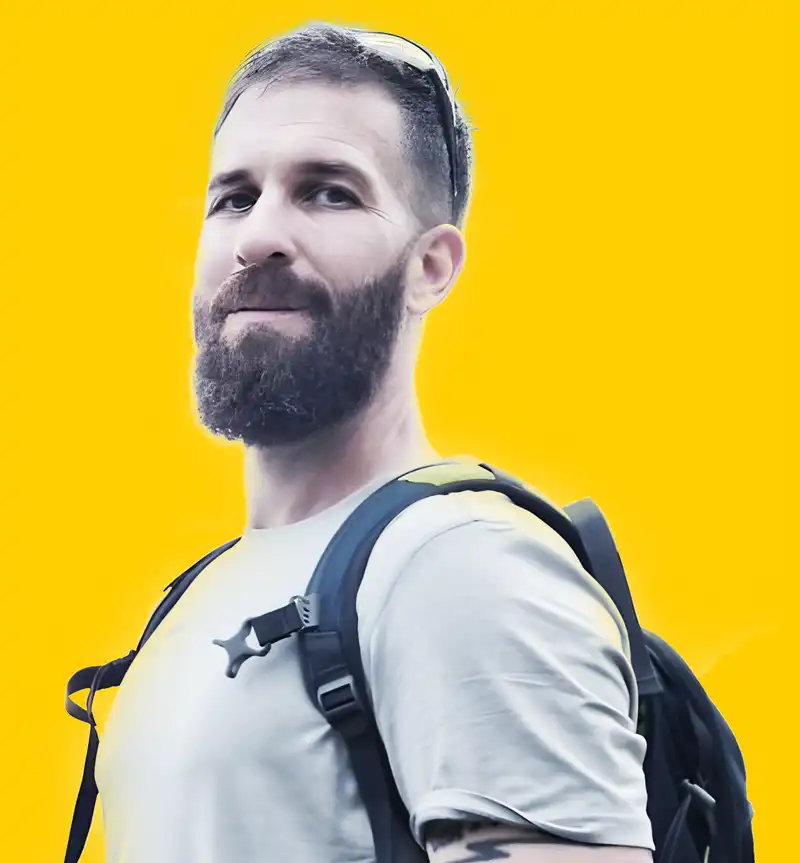Save up to 50% on all digital items with our Last Minute Christmas Sale on now!
- Home
- Family Trip to Germany
Where To Go For The Best Family Trip To Germany
By: Eran Fulson / Traveler, writer, and curious observer of all things German.
We may not be able to help with the question "Are we there yet?", but we can help with deciding where "there" will be. Vacations can form wonderful, lasting memories, and a family trip to Germany offers great experiences for any age.
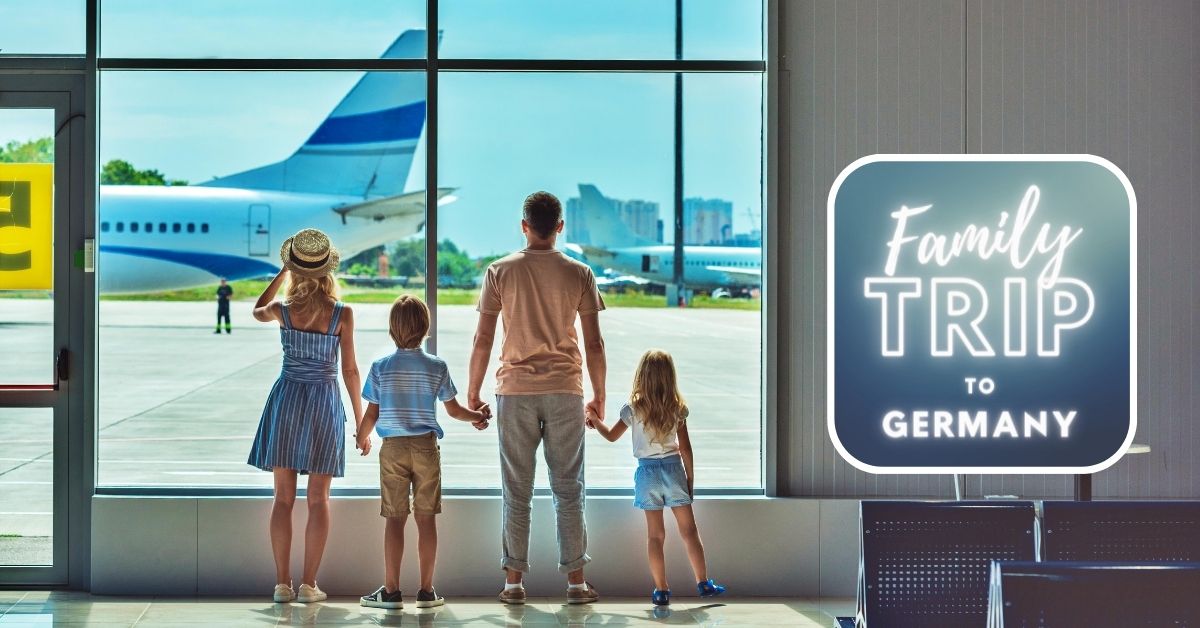
On this page:
Whether it’s amusement parks, world-class museums, or historical sites, we’ve found plenty of things to keep the whole family engaged and asking instead, "When are we going?"
As many parents will agree, the best laid plans can oft go awry, but a bit of planning now can save unnecessary stress later. Keep scrolling down for destination ideas and travel tips on how to make your family trip to Germany an unforgettable one—but forgetting the kids, well, that’s on you.
Getting Around and About
Germany is one of the better countries to get around in and go off-piste. Its public transportation system is well connected through major German cities and links small towns together.
Many major cities have short-term travel cards that also offer discounts at main attractions and local restaurants. Such as the Berlin Welcome Card, Cologne’s KölnCard, Munich’s City Tour Card, and the Hamburg City Pass. Before you head off on holiday, search "(city) travel card" to see if your chosen destination offers one.
After you’ve ordered the card, or if you’ve decided against it and will be going off renegade style, a handy site for getting around is Rome2Rio. It’s like Google Maps on steroids. Wherever your point A and point B might be, it’ll find the best way to get there. Rome2Rio also has a downloadable app, so you always have it on hand.
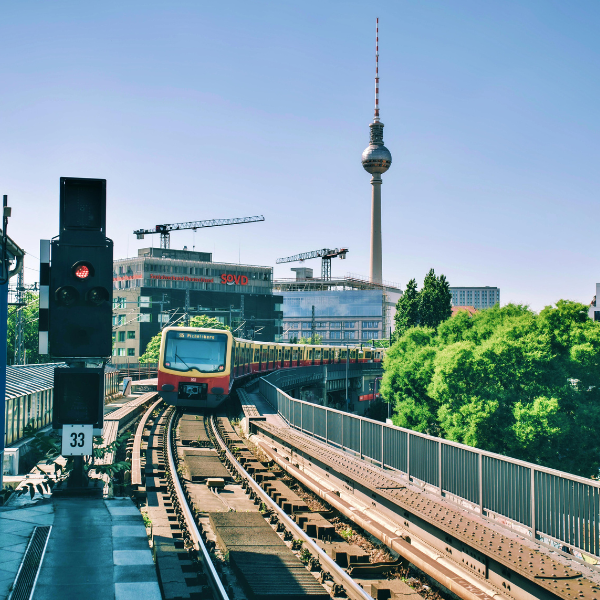
Highway to the Fun Zone
We’ll begin with a total package getaway, and don’t let your kids see this before deciding on it because they’ll make that decision for you.
Europa Park is the second largest theme park after Disneyland Paris and is consistently ranked among the best in the world.
Located in Rust, Baden-Württemberg, it covers a mammoth 234 acres. Among the amenities are thirteen roller coasters, six 4* hotels, a tepee village, camping grounds, and a cinema. Food is equally well covered by forty-five restaurants and bars catering to all diets and ages (though some are adult-exclusive).
Given their obvious location in a theme park, the six hotels are family-friendly and uniquely themed accommodations. From a medieval castle to an Italian piazza or a Portuguese monastery, you don’t have to go very far to go very far away.
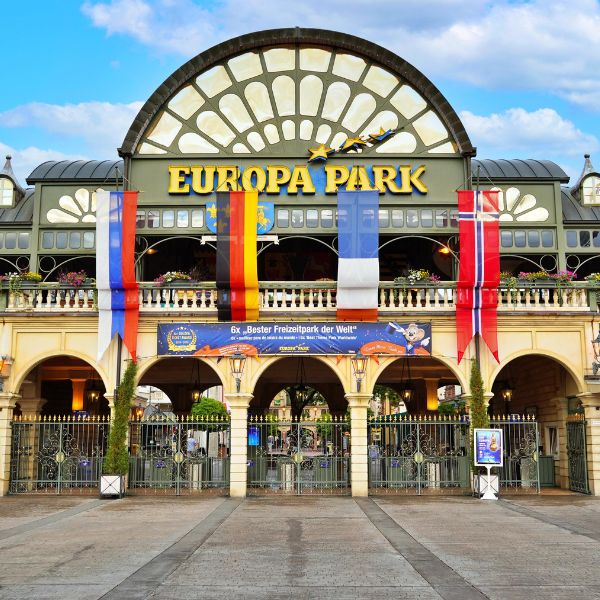
Another bonus of Europa Park is Rulantica, a year-round waterpark with over fifty water slides and attractions across fourteen themed areas. Two pool bars, three saunas, and a steam bath offer at least one parent some quiet respite. Various rides and a toddler zone ensure all ages enjoy a soakingly-good time.
The adrenaline junkies will definitely get their fix flying down any of the thirteen roller coasters or the wholly immersive virtual reality attractions. In short, everything you could want or need is at your fingertips. You could do worse, but you couldn’t do much better while having plenty of fun here.
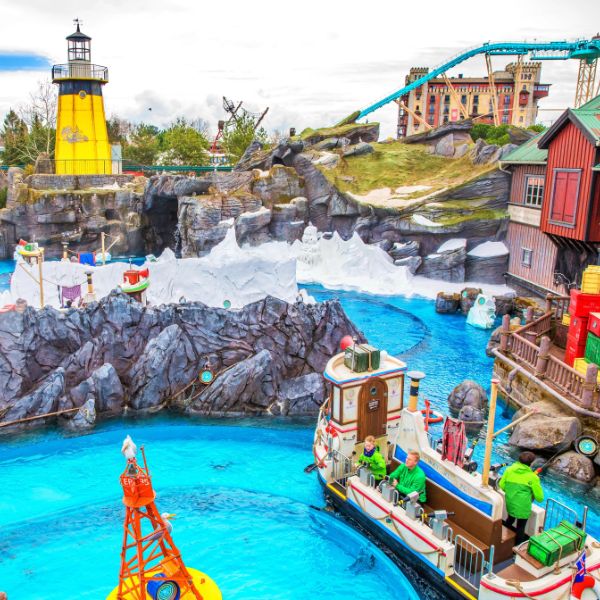
Tiny Things vs Big Packages
Maybe I’m generalizing, but there seems to be a gap between the ages of 12 and 45 where model trains aren’t exactly in vogue.
Fun Fact
There are more tiny human figurines in Miniatur Wunderland than the population of nearby Lübeck (289,410 vs 228,658).
I’d also argue that the gap becomes less drastic upon walking into Miniatur Wunderland, where they’ve mastered the art of countless tiny things on a grand scale.
Over 1,100 trains pulling some 10,450 rail cars along more than 54,000 feet of track through 11 different theme worlds is enough to turn a few heads. I can’t guarantee it’ll be enough to distract a screen-focused teen, but it’ll give you a fighting chance.
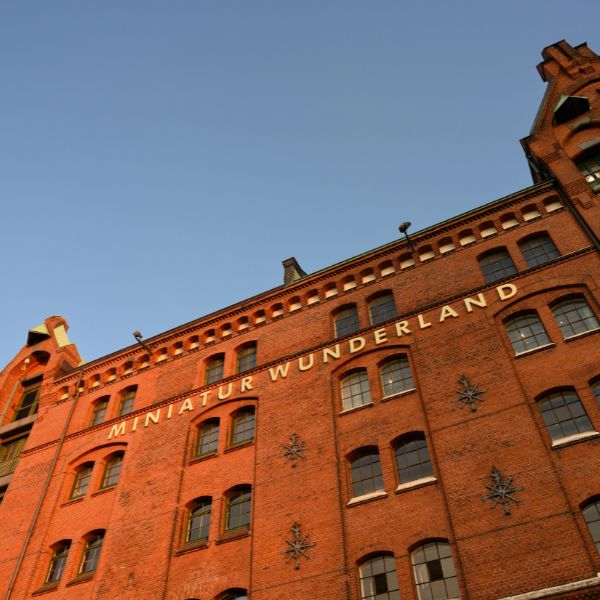
Grimm Tidings
Jacob and Wilhelm Grimm have been captivating adults and children alike for more than two hundred years.
While many of their early fairy tales fall into the terrifying category, thanks to the likes of Disney, many adaptations have brought colorful imaginations into the minds of children for decades. And what better way to experience the best of the Brothers Grimm than by traveling the German Fairy Tale Route?
Spanning more than 350 miles from Hannau in central Germany to Bremen by the North Sea, this magical route brings many of your most beloved tales to life.
Focusing on the places the brothers lived and worked, the route also includes locations that feature in some of their best-known stories, such as the village of Alsfeld, where the house in Little Red Riding Hood is still standing today. Or the 14th-century Sababurg Castle, where Sleeping Beauty once stayed a while.
Along with more than twenty other castles and palaces along the route, dotted among quaint villages and numerous nature parks, it’s the magical road trip of a lifetime.
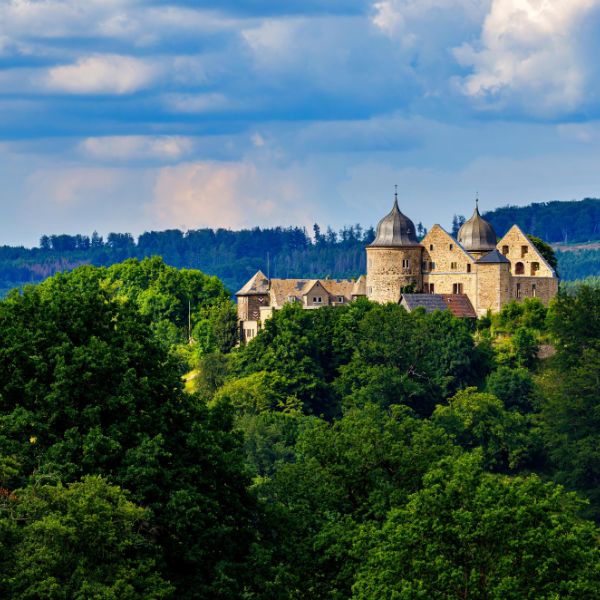 Sleeping Beauty's cozy digs, Sababurg Castle
Sleeping Beauty's cozy digs, Sababurg CastleHave a Wheelie Good Time
Cycling as a family is a great way to get out together and explore the countryside at a more leisurely pace. There’s so much more to discover in Germany when cruising along on two wheels.
Various cycle routes meander through fairytale landscapes, alongside vineyards, or through romantic medieval towns. Whatever your inclination, there’s a route to take you there.
Think whatever you will about electric cars, but electric bikes are wonderful machines that allow a reasonably fit individual to scale hills like they’re on the Tour de France. Many bike rental shops now stock e-bikes, which opens up a whole new variety of landscapes that one doesn’t necessarily need to train extra for to get up the hills.
That said, credible bicycle tour operators should disclose the riding difficulty of their routes and whether they will be suitable for families.
Of course, age shouldn’t put you off taking even the littlest ones with you. Child seats are generally available to hire, and depending on the rental shop, a trailer might even be an option as well.
Right, so with all that said, here are some popular routes for inspiration:
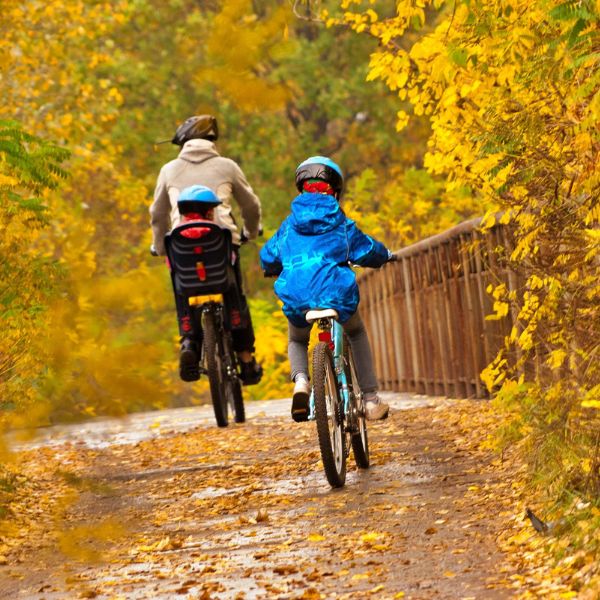
Romantic Road & Bavarian Lakes, via Tour Radar
An eight-day loop beginning and ending in Augsburg takes you around the famed and magical Romantic Road, with beautiful Bavarian lakes dotted along the way. Passing through Füssen and Schwangau makes the equally famed Hohenschwangau and Neuschwanstein castles an obvious stop along the way as well.
There are roughly 25–35 miles of cycling per day, but with all the views along the way, it’ll be easy to pace oneself.
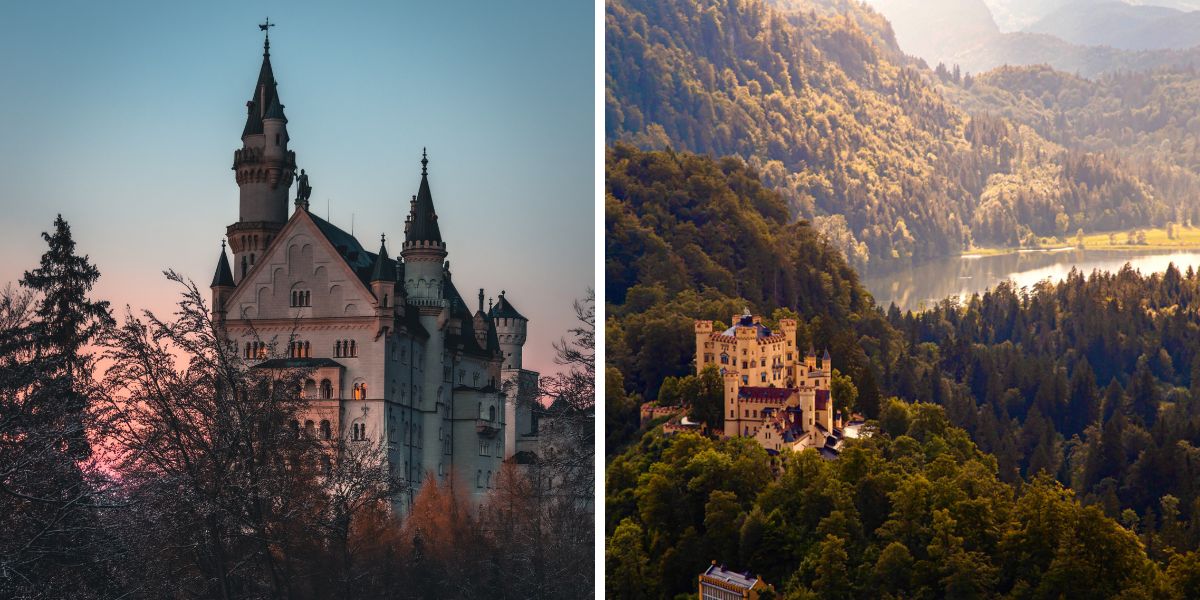
Hamburg Compact, via Hamburg City Cycles
Traditionally best viewed by boat, exploring Hamburg on a bike is an equally great choice to discover the best of this amazing northern city. This local bike shop offers both rentals and private, guided tours around Hamburg.
The eight-mile tour takes in the Outer Alster, Speicherstadt, and St. Pauli districts, each one unique to themselves and a great way to see many of Hamburg’s main attractions.
All the Options, via Cycle Route Planner
Covering more than 62,000 miles of cycling networks across Germany, this route planner centralizes seven states with their respective cycling websites. Everything you need to plan a route along with 5,000 bicycle-friendly hotels and thousands of POI (Points of Interest).
Foshizzle My Nucleus-izzle
There are many ways to make science ‘cool’ without trying too hard. Perhaps the easiest way is to let someone else have a crack at it so you don’t lose any valuable, albeit minimal, parental ‘cool’ credibility.
In this case, the science museum of Bayerwald Xperium in the mountain village of Sankt Englmar (east of Nuremberg and Munich) is more of a science center whose mantra revolves around a quote by Confucius: "Tell me and I will forget; show me and I will remember; let me do it and I will understand."
Through their skillful combination of science and fun, they create an environment that engages, stimulates, and almost covertly, teaches. Exhibits are designed to be experimented with while making seemingly complex scientific facts easily understandable for all ages.
There’s more in Sankt Englmar that’s worth sticking around for as well.
The Wald Wipfel Weg Nature Park is an outdoor activity center with many attractions to keep the family entertained. Notably, the Forest Tower rises just over 170 feet, which offers panoramic views towards the alps and surrounding woodlands.
A wide, winding ramp forms the tower, making it easily accessible for strollers and wheelchairs.
Museum of the Stars
The Deutsches Museum Kongresshalle was once the stage for musical legends such as Jimi Hendrix and The Who.
Generally, the Deutsches Museum is better known as the world’s largest museum of science and technology. Fifty fields of science and technology are displayed through more than 28,000 exhibited objects.
Far beyond an all-encompassing foray into all things science-related, the Kid’s Kingdom focuses on drawing in the attention and captivation of your little ones. From a hall of mirrors to a night sky and shadow theater, the Deutsches Museum encourages a highly interactive visit.
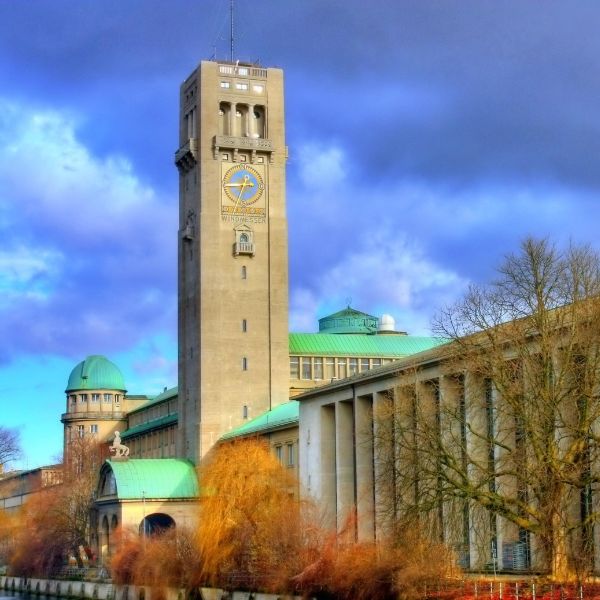
Go Big
As a kid, I remember being amazed by anything that was big. Growing up in Canada, there were the usual supersized suspects: Niagara Falls, the CN Tower, an occasional furry-looking spider...
Germany is no stranger to rather large landmarks either. Notably, in this instance, the Cologne Cathedral. Its six-hundred-year construction saw the rise of its 515-foot twin spires, and it still stands as the tallest twin-spired church in the world.
Even as a UNESCO World Heritage Site, if the kids can't or won't appreciate the magnificence of the cathedral, a guided tour specifically aimed at older children (8–12 years old) might do the trick. Filled with history and mythical legends, the 1.5-hour tour takes them around the Cathedral, underground Roman ruins, and the oldest parts of Cologne.
For what it’s worth, a bit of bribery with an ice cream from the nearby Eiscafé Raffaello wouldn’t hurt either.
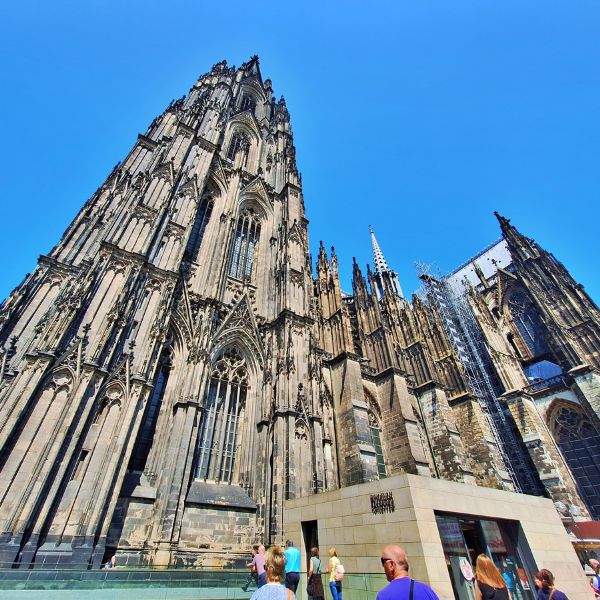
GET OUT (and about)
Whether it’s a stroll through your local conservation woodlands or a National Geographic-inspired expedition, heading out into the great outdoors can be one of the best family vacations.
Being away from the daily deluge of screen time and household distractions is generally refreshing and the best way to reset body, mind, and soul. However, it can also have quite the opposite effect. Especially where children are concerned.
Sure, when you were younger, you’d head off for a couple days of trekking in the wilderness with nothing more than a hastily packed backpack. And I’m even more sure you swore to make a list of all the things to bring next time, only to never make the list.
I’m not going to sugarcoat it if you don’t already know that children inevitably complicate the packing and planning phases of outdoor activities. But it’s worth it.
Every minute of checking, double-checking, and driving back to the house five miles down the road because someone brought the blue sippy cup instead of the red one. Trust me, it’s worth it.
To help a bit, here are some ideas to make sure your next foray into the wild is better than it could be.
 They will like it and we will all have fun.
They will like it and we will all have fun.Plotting Your Escape
Sure, things change. Despite all the best planning, something will likely be forgotten, and so long as it isn’t one of the kids, everything is replaceable or adaptable.
Depending on the ages of your offspring, consider the terrain you’ll be covering. If they can’t walk for more than a mile or two (if at all), is it doable for a stroller or backpack carrier?
All-terrain strollers are a great choice and are designed to handle uneven ground. Be sure they have air-filled tires and, ideally, a suspension system. Some even have a replacement set of smaller tires that transform the all-terrain stroller into a more suitable urban runabout.
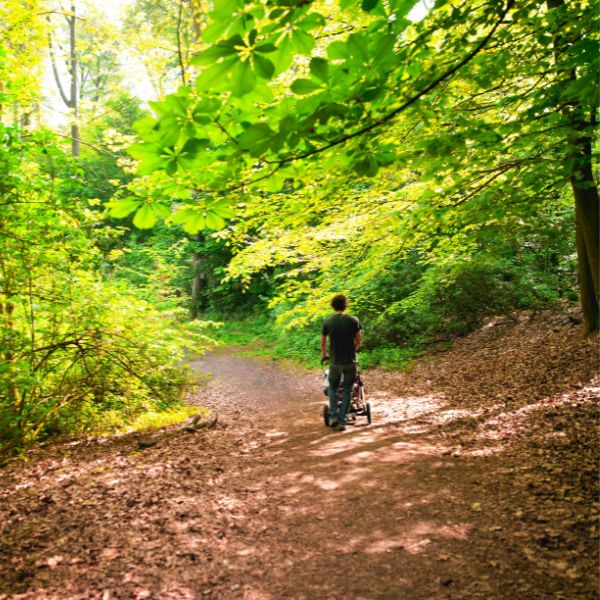
A backpack carrier is probably the best way to transport your precious, albeit increasingly weighty, cargo. Much progress has been made in recent years towards the comfortability of both carrying (for you) and relaxing (for them).
Higher-quality carriers will have a suspension built-in; most will have some form of integrated sunshade, but always check that it’s comfortable. Both for your child and, equally important, for you.
Like a good quality stroller, a carrier is an investment that will see your child's transportation covered for a good few years. Second-hand equipment is also something to consider, but with a few caveats.
First, check the brand to research the manufacturer's information and public reviews. Second, look closely for excessive wear or damage—around the straps, stitching, clasps, etc.
And lastly, cheap knockoffs will be floating around. If it looks too good to be true, it probably is. Bear in mind that someone selling a ‘branded’ knockoff may have been duped themselves. Don’t always presume a scammer, just walk away if it doesn’t sit right.
Plan for the rest stops as well. It’s a proven fact that toddlers are magnetically attracted to rabbit droppings, stones, leaves, sticks, and pretty much anything else weighing under a pound.
A picnic blanket, while not foolproof, gives you a fighting chance at limiting foreign 'food' ingestion, as well as a dry, comfortable rest area.
Things to consider: A waterproof layer - grass can look and feel pretty dry, but after a while, moisture will eventually begin seeping through. Size - make sure it’s big enough so the little one(s) have room to clamber in case you don’t catch them in time. Ideally, I’d go for the largest possible size that’s easy to pack.
From A to harZ
The natural landscapes of the Harz Mountains, from Lower Saxony to Thuringia, don’t receive anywhere near the recognition they deserve. At least from the outside world, and that makes this an ideal destination for a family trip to Germany.
While fellow tourists stand shoulder-to-shoulder at the Top-10-This and the Top-10-That, you’ll be basking in the peaceful serenity before realizing it’s 5pm and the kids are still napping. Maybe it's an exaggeration, but it’s definitely a bit more laid-back up here in the north.
Some of the highlights include:
World Forest Harz: For outdoor lovers, the World Forest is set among 160 acres and contains more than 600 tree and shrub species from Asia, Europe, and North America. 7.5 miles of signposted trails guide you through various cultivated forests as they are on continents around the world.
Whether it’s the full bloom of summer or the parade of autumnal change, the best time of year to go is whenever you turn up.
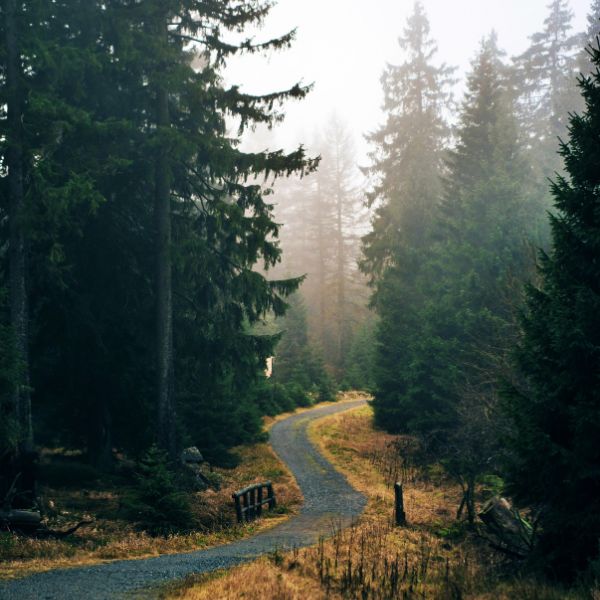
19 Lachter Stollen: Once considered the largest tunnel structure in the world during the 19th century, the Lachter Stollen is a network of tunnels that serviced the old Upper Harz silver mine. Covering a period between 1551-1924, this underworld excursion is a fascinating one with old machinery and a guided tour.
Having had a few underground experiences in my childhood, the fact I still remember them speaks volumes about the impressions left behind versus whatever computer game I was trying to level up on.
Cave and Museum in Imberg: Given the natural woodland beauty of Harz, it would be fair to question my bias toward going underground. As I mentioned above, my childhood memories are partial to the subterranean. Unless it was going down into the basement at home…nah, not going there alone.
However, known as the Hoehlen Erlebnis Zentrum (Cave Experience Center), this is an all-encompassing cave experience. From the Imberg Stalactite Cave to the Lichtenstein Cave, which features the graves of the oldest extended family of the Bronze Age and a former coral reef embedded in the depths of the Harz Mountains, there is enough to captivate your family of all ages.
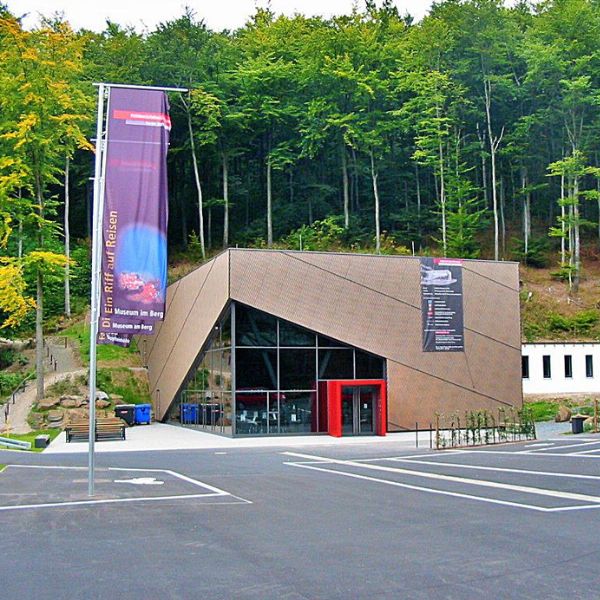
Titan-RT: Assuming you know your family’s risk-excitement/aversion, you might be making this unique experience alone, but it’s worth it.
Spanning a hair over 1,500 feet across the Rappbode Valley and over the Bode reservoir, the Titan-RT is a suspension bridge that’s the longest of its kind. Anchored into the slate banks with a pulling force of 947 tons, the bridge stands 328 feet at its highest point from the ground below.
Just for a bit more adrenaline fun, there’s a swing directly underneath the bridge with a 246 foot leisurely free fall experience. Minimum age of 10, but check the website for further information.
There’s also a 3,280-foot zip-line that travels over the bridge and Rappbode Dam at a maximum height of just under 400 feet off the ground. Sign me up!
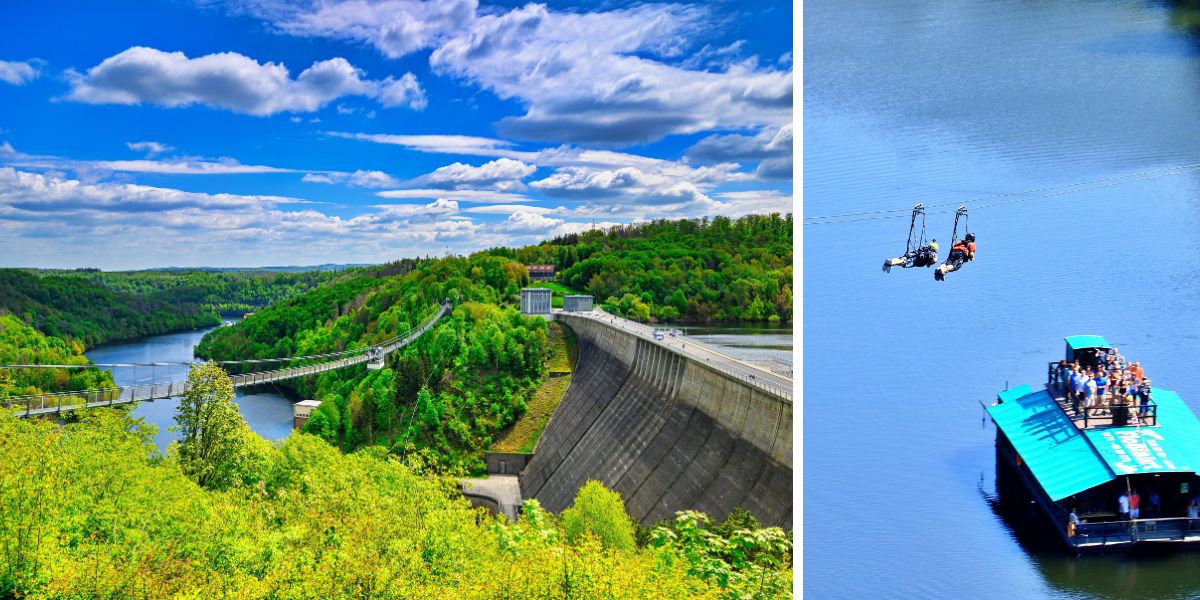
Yodellers Anonymous
I’ll preface this with a Top Tip: It’s probably best to disclose the yodeling culture of the Alps to the kids early on in hopes they won’t keep practicing it all the way back home.
Now You’ve Peaked: We’ll start with the biggest attraction first: Zugspitze. At a commanding height of nearly 10,000 feet above sea level, Zugspitze is the tallest mountain and the literal top of Germany. And happily, you won’t need to pack your climbing gear to experience the summit.
In the two hundred years since the mountain was first conquered by Josef Naus, a cogwheel train (circa 1930) and later the Cable Car Zugspitze have made the journey a little easier.
Among the Cable Car world records held, the 10,500-foot free span between the support tower and the top station is a little mind-bending. But just like a plane, it’s best not to dwell on the science behind it and just enjoy the view on the way up…and down.
It isn’t only the journey up Zugspitze that’s memorable. After taking in the summit and the near countless surrounding summits in the distance, enjoy a snack or full meal at Panorama 2962.
As suggested by the name, 360-degree panoramic views over 400 mountain peaks across Italy, Austria, Switzerland, and Germany isn’t a bad way to regroup before making your way down.
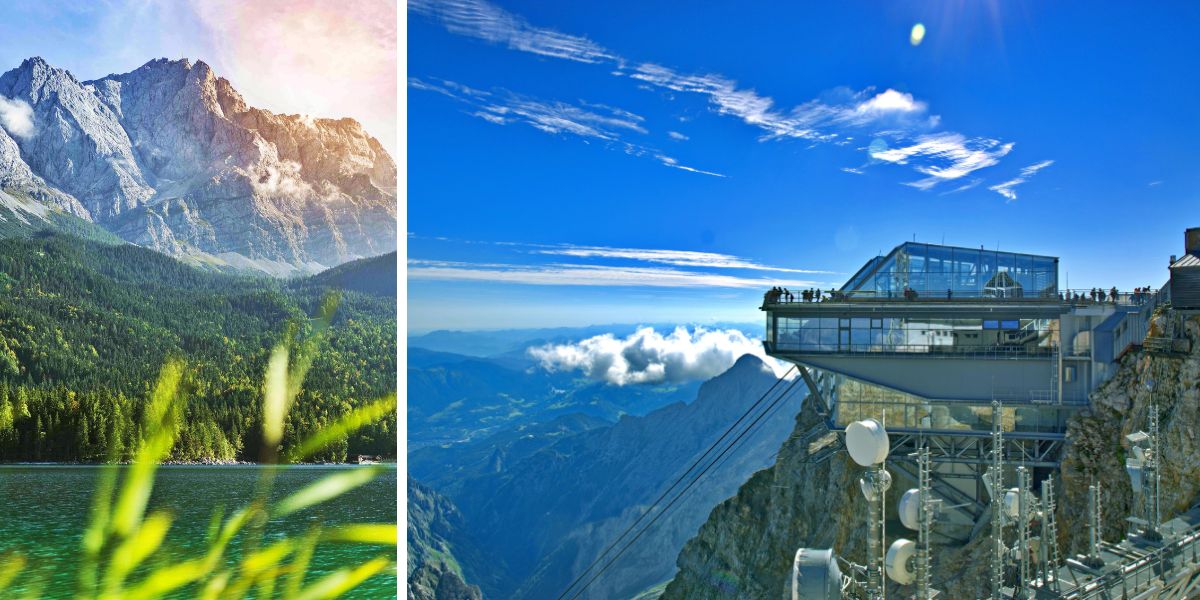 Whether from the bottom or the top, Zugspitze is amazing.
Whether from the bottom or the top, Zugspitze is amazing.Stuff of Fairy Tales: Just outside of Füssen in the dense forests of Schwangau is the literal fairy tale castle, Neuschwanstein. King Ludwig II of Bavaria began building the fabled castle in 1869, yet sadly, he never saw its completion.
It’s no secret that there are similarities between the Disneyland castle of Cinderella and Sleeping Beauty to Neuschwanstein Castle, and that’s largely due to Walt Disney’s visit to the castle and subsequent inspiration drawn from it. The castle was also famously featured in the 1968 classic Chitty Chitty Bang Bang.
As my niece Lydia will recount from her childhood, I was famously (among my family at least) married in a castle in Wales. We were fortunate to have keys to the gate and free reign over it for three days. Less famously, my jet-lagged brothers discovered the dungeon and its waxwork figures by flashlight at 5am.
However, there’s no denying the royal-childlike joy of running (respectfully) around fairy tale castles from the cartoons that’s now become real life. With that in mind, it’s definitely worth the trip.
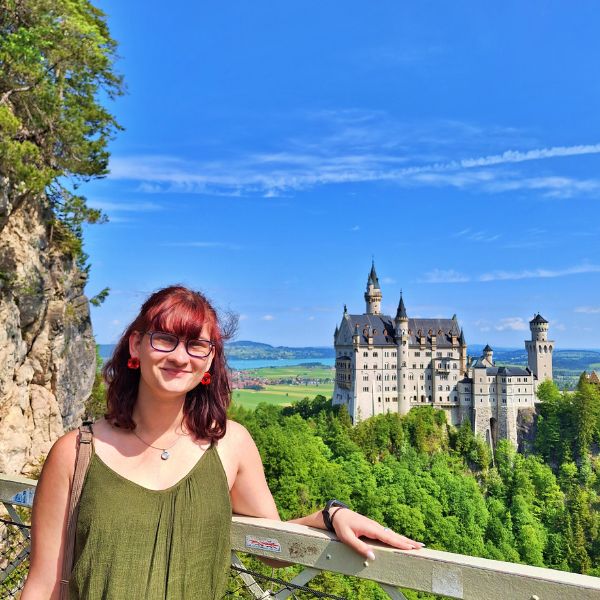 Lydia found a good spot for a quick shot.
Lydia found a good spot for a quick shot.Getting to the castle by car can be a little tricky for parking. One’s best bet is to either park in Füssen, but at 3 miles, it’s a bit of a hike if you have toddlers with you, although it’s a very scenic walk.
A closer option is to park in the Hohenschwangau village, where it’s a roughly thirty-minute walk up. There is also a shuttle bus or a horse-drawn carriage, but these are only operated during peak season.
It’s best to book guided tour tickets online before heading up to beat the crowds if it’s a busy time of year. Strollers are not allowed inside the castle, but there are stroller lockers available at the entrance.
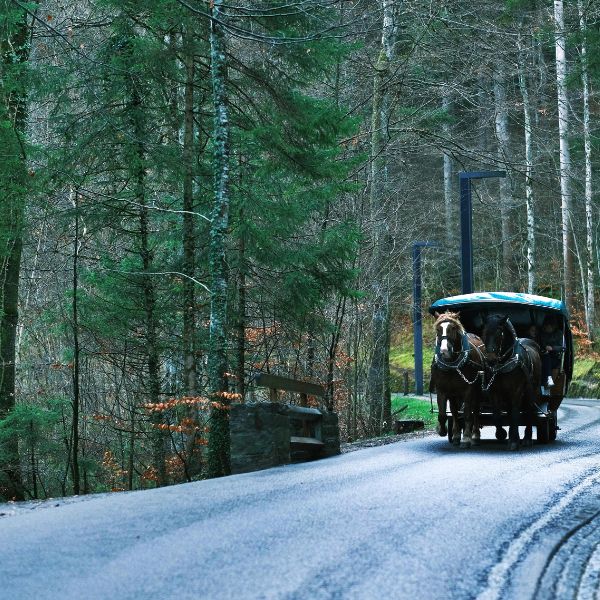
In Memoriam
There’s a poignancy to the many World War II memorials in and around Berlin. One would argue for the necessity of educating the coming generations so that history does not repeat itself.
While the age of your children will generally dictate how much they recognize the significance of their surroundings, there are some attractions that require a bit more engagement than others.
Notably, the German Spy Museum. There is little more to say other than, spies. In my day, it was Inspector Gadget, the Pink Panther, and James Bond. The chance to witness the reality of the former spy capital of Germany would have been amazing.
Obviously, tied into the museum is the history of espionage throughout the Cold War and beyond. So there’s a bit of fun education right there.
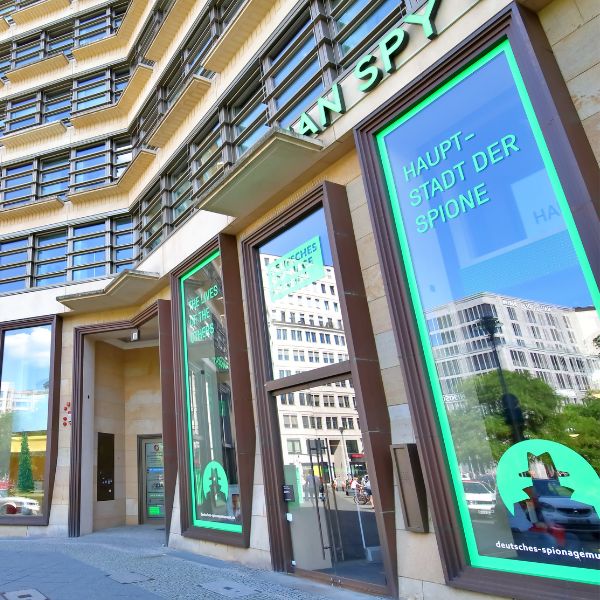
I’ll concede that generally, pitching ‘education’ and ‘family holiday’ in the same sentence to the family is a difficult sell.
Just to make it a little easier, swap ‘education’ for ‘scavenger hunt' and you might find the little ones a bit more amenable. Stadtspiel Schnitzeljagd (City Game Scavenger Hunt) turns a run-of-the-mill city excursion into an interactive experience that takes you to many of Berlin’s iconic landmarks.
Effectively, it’s a self-guided walking tour with puzzles and clues that lead to historic sites such as the Cathedral, the Berlin Wall, the Brandenburg Gate, the TV Tower, and many more locations.
All you need to do is order the scavenger pack before you jet off, and everything you need will be sent to you. The company also has packages for cities throughout Germany, such as Hamburg, Leipzig, and Cologne, among many others.
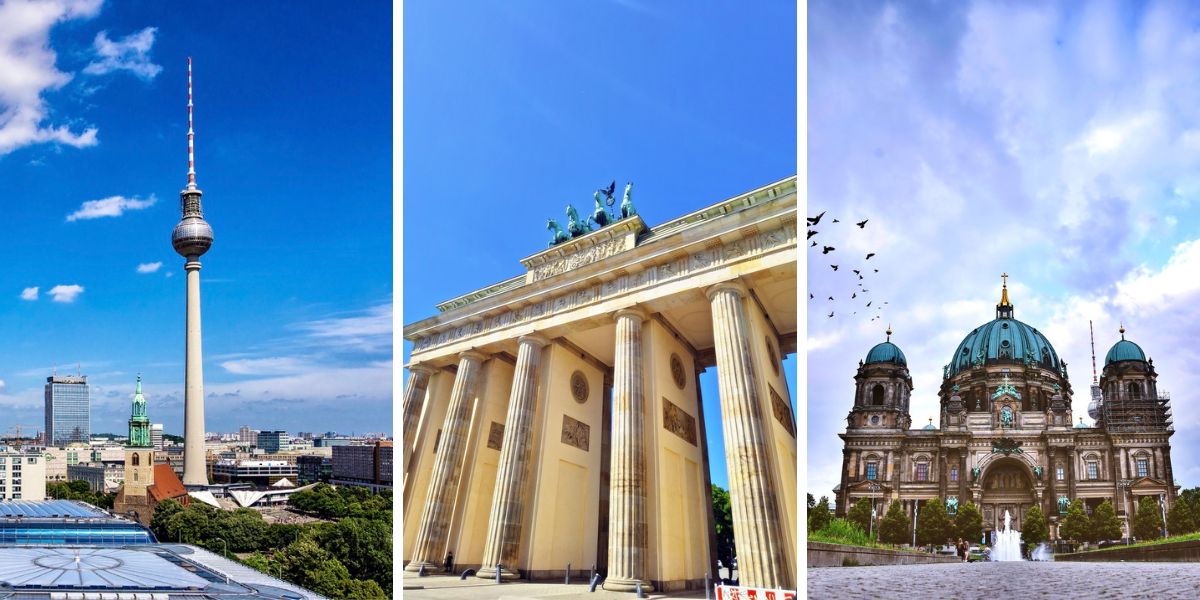
Are We Done Yet?
Yes, yes we are done. So done, but so much yet to see. While not wholly comprehensive, hopefully this post sparks some ideas for your next family trip to Germany. Perhaps the biggest takeaway is one you’ll already know: for all the best laid plans, the unknown and unplanned is always lurking. Plan for the best, the worst, and roll with the inevitable punches. And have fun!




